When it comes to collecting tarantulas, each person has their own preferences. For me, I prefer New World species over Old World (see my blog Old World Vs. New World Tarantulas). For this species spotlight I am here to discuss Acanthoscurria geniculata, the Giant White Knee, a bird-eating tarantulas from Brazil.
Let me start by saying that I love this species. Though it’s a fast grower, it is still a relatively long-lived animal. Females are said to live 18 to 20 years with the males only living 3 to 4 years. This is one of those tarantulas that you want to get as a spiderling as with each successive molt, they almost double in size! This has always impressed me with the faster-growing species.
Acanthoscurria geniculata also makes a great display animal, as it is rarely hiding in its burrow or provided hide. When you have a species this large, and this beautiful, then you definitely want to be able to enjoy it by actually seeing it. It is also an aggressive eater, often talking multiple prey items at once.
This is one of the larger species of tarantula, with leg spans reaching up to eight inches. Mine seems to be calm for the most part, except during feeding time. It is pretty amazing to see such a large tarantula move so fast. It’s also kind of scary when you are cleaning the tank with a long pair of tongs, and it tries to grab them out of your hand. They do flick urticating hairs, but it seems to take a lot to get them to do it.
Coming from Brazil, this species needs a higher humidity (60-80% seems to work fine). I do provide a large water dish, and have seen her drink from it, but she also likes to bury it in substrate According to the book “Tarantulas: Breeding Experience & Wildlife,” the substrate should be kept moist from March until June, dry from July to November and very moist from December to February.
The colors of Acanthoscurria geniculata are absolutely stunning, especially with a new-molted specimen. The overall color is dark gray to black with white striping on all of the legs. Even the hairs on the legs are white, a beautiful contrast to the black parts of the legs. The abdomen is also dark, with pinkish hairs.
These are also very strong tarantulas, so a secure lid is a must. If you want a big, beautiful tarantula in your collection, then you cannot go wrong with geniculata. Every time I feed my girl; I am just impressed with every aspect of her. They are readily available from online breeders and are not too expensive either.
I recommend all tarantula keepers to share their experience with this species in the comments below. Sharing information is what keeps this hobby alive!
~David Albaugh

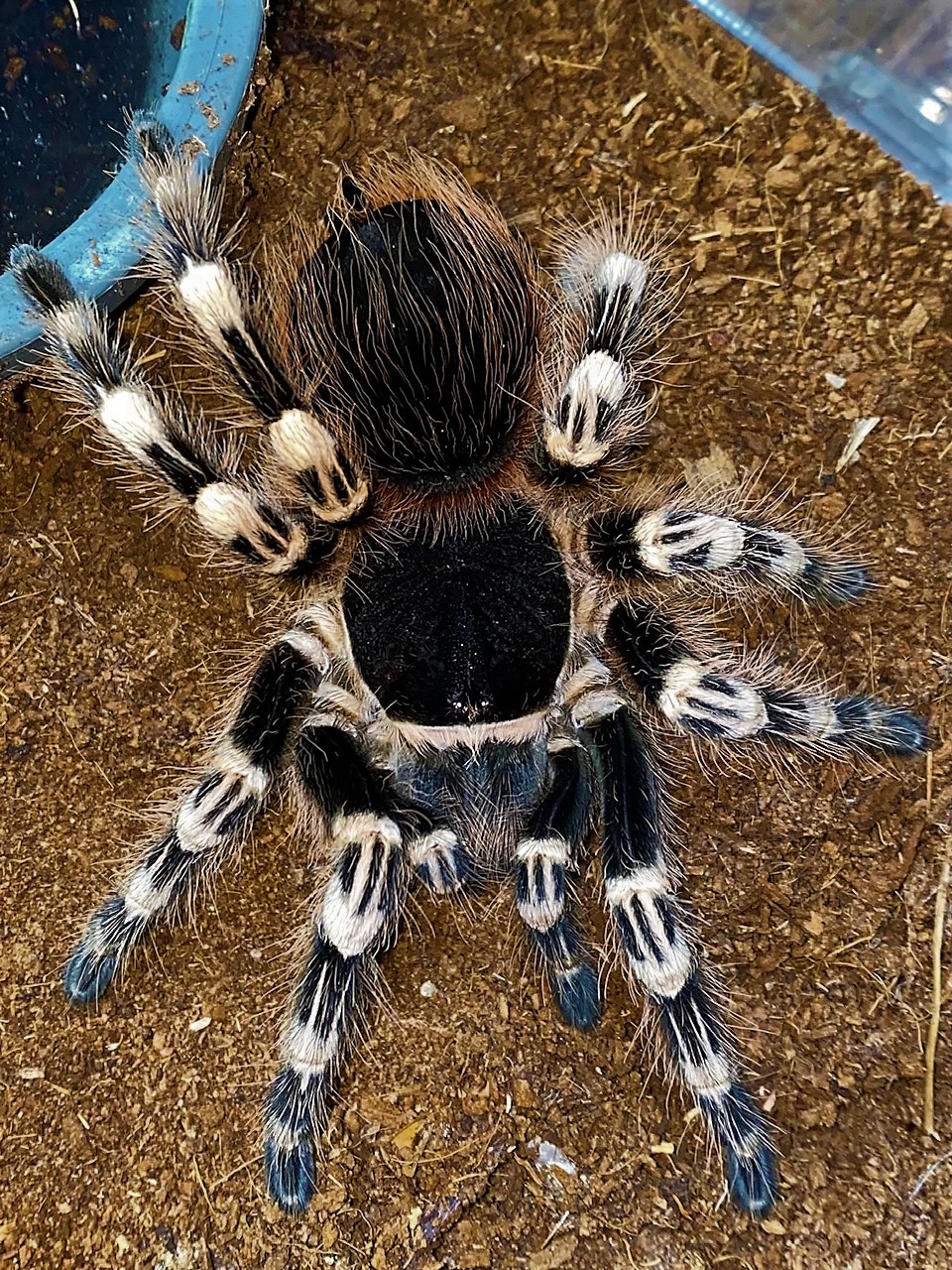
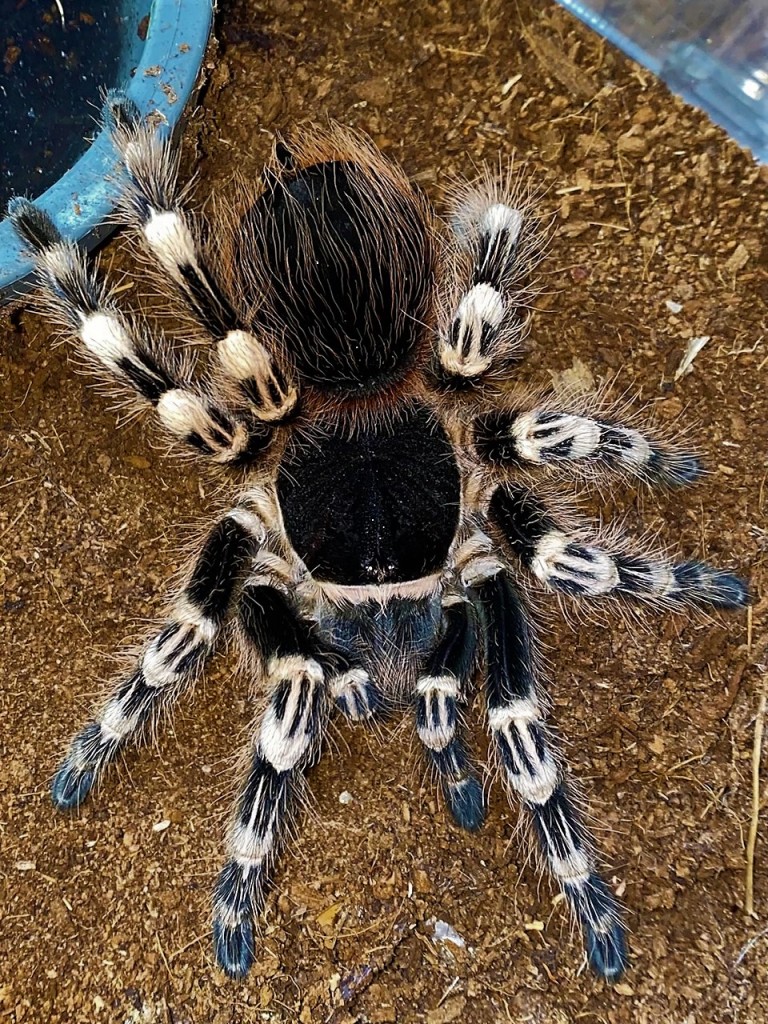

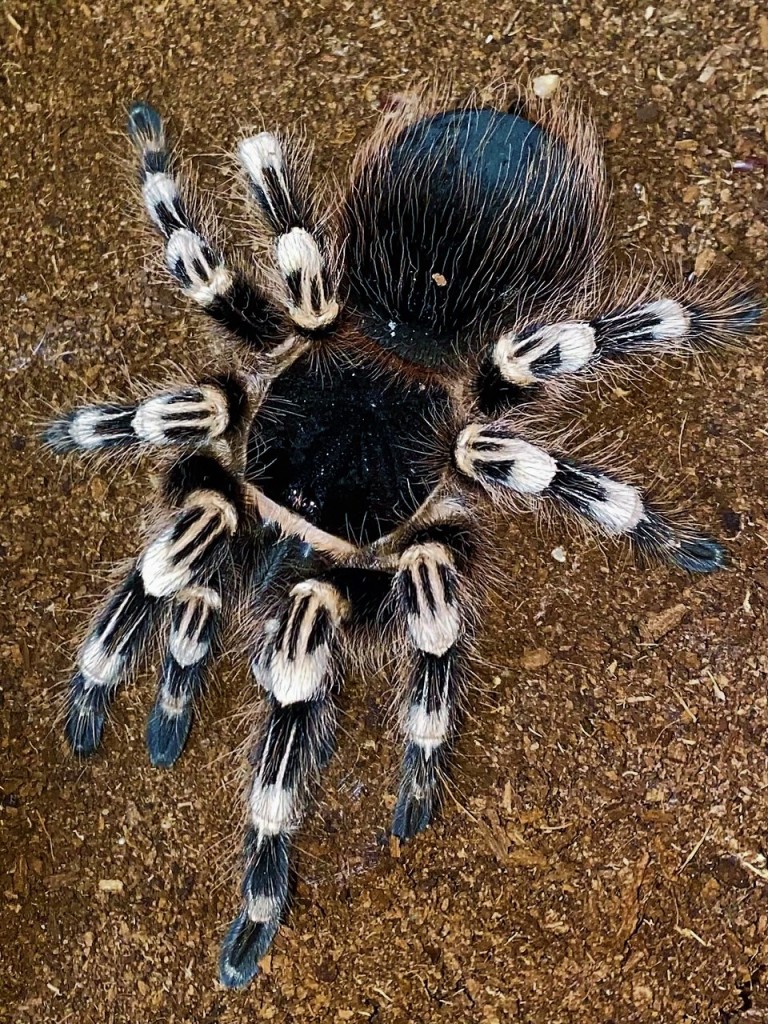
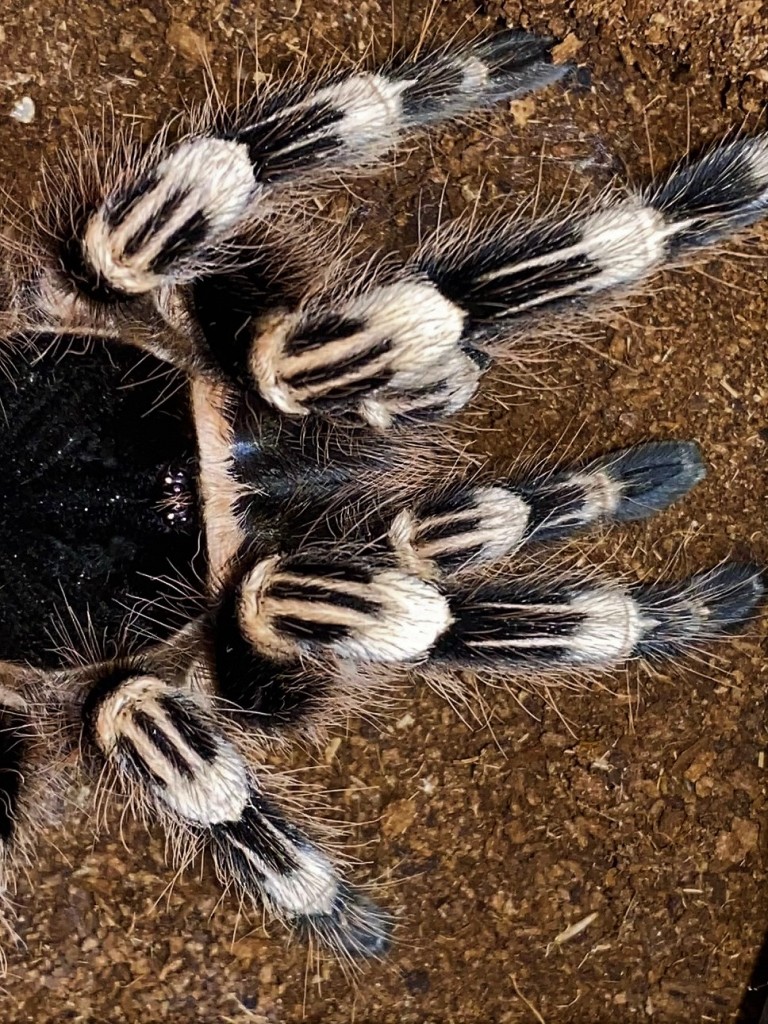



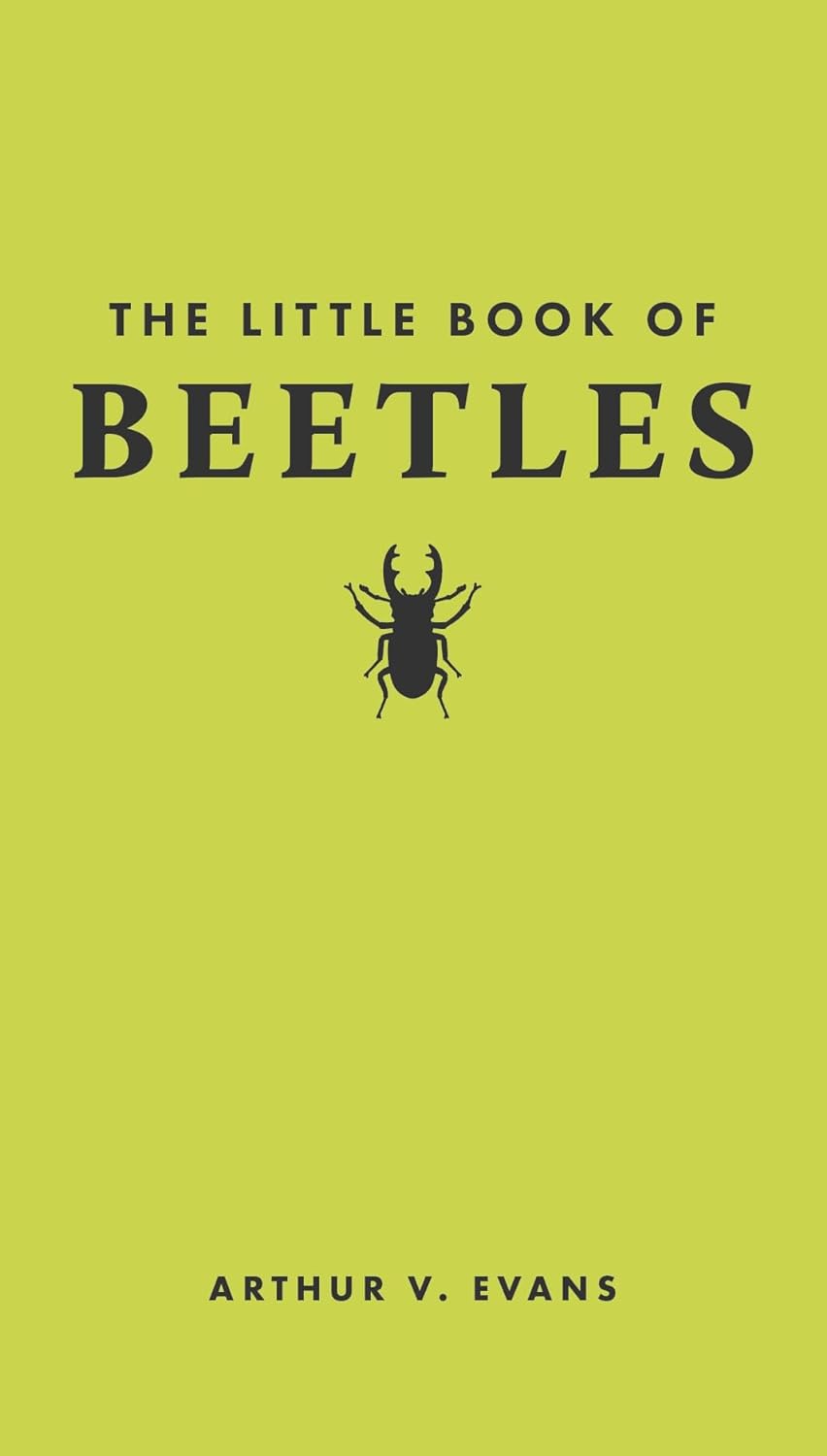

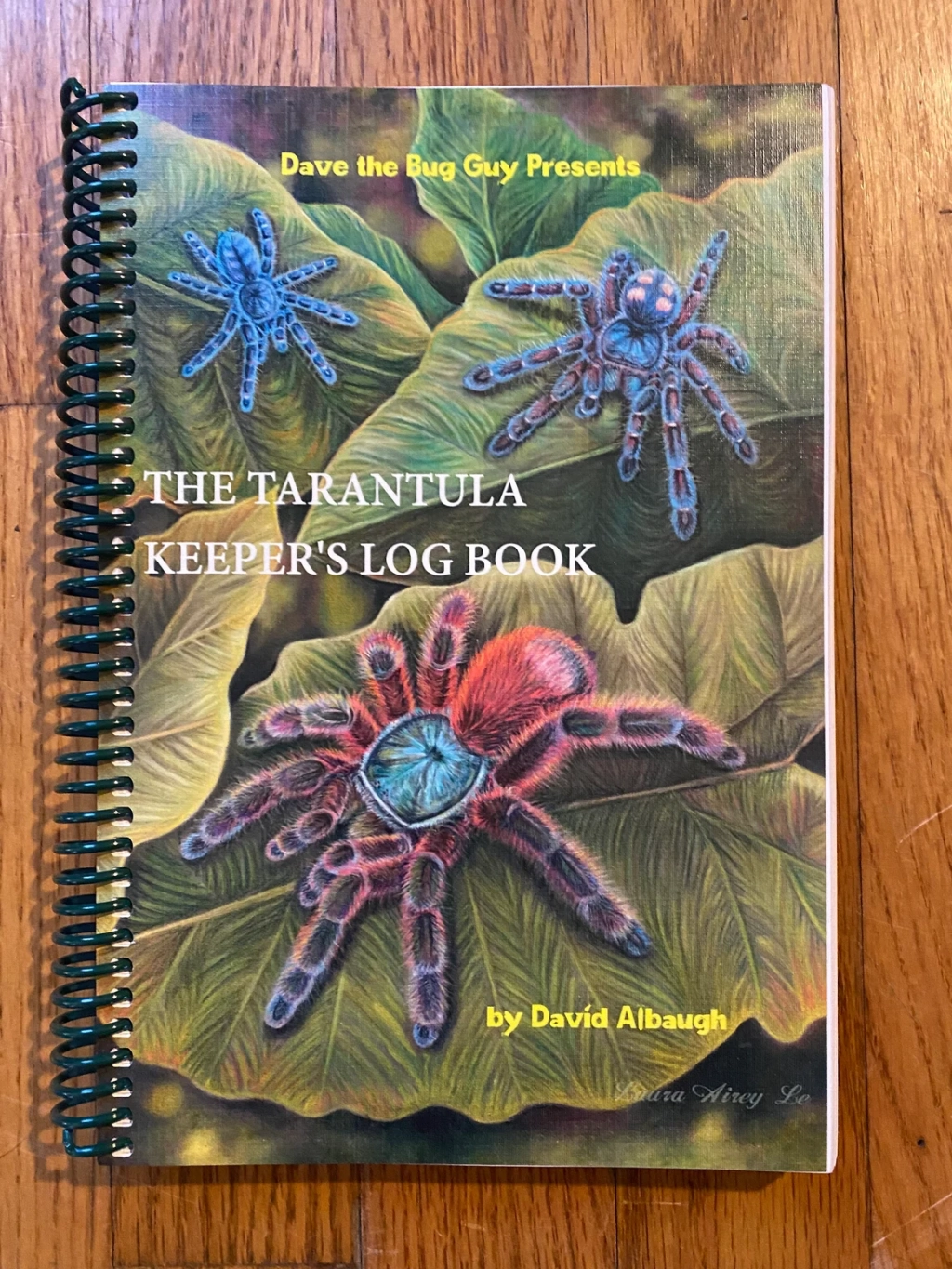
Leave a comment